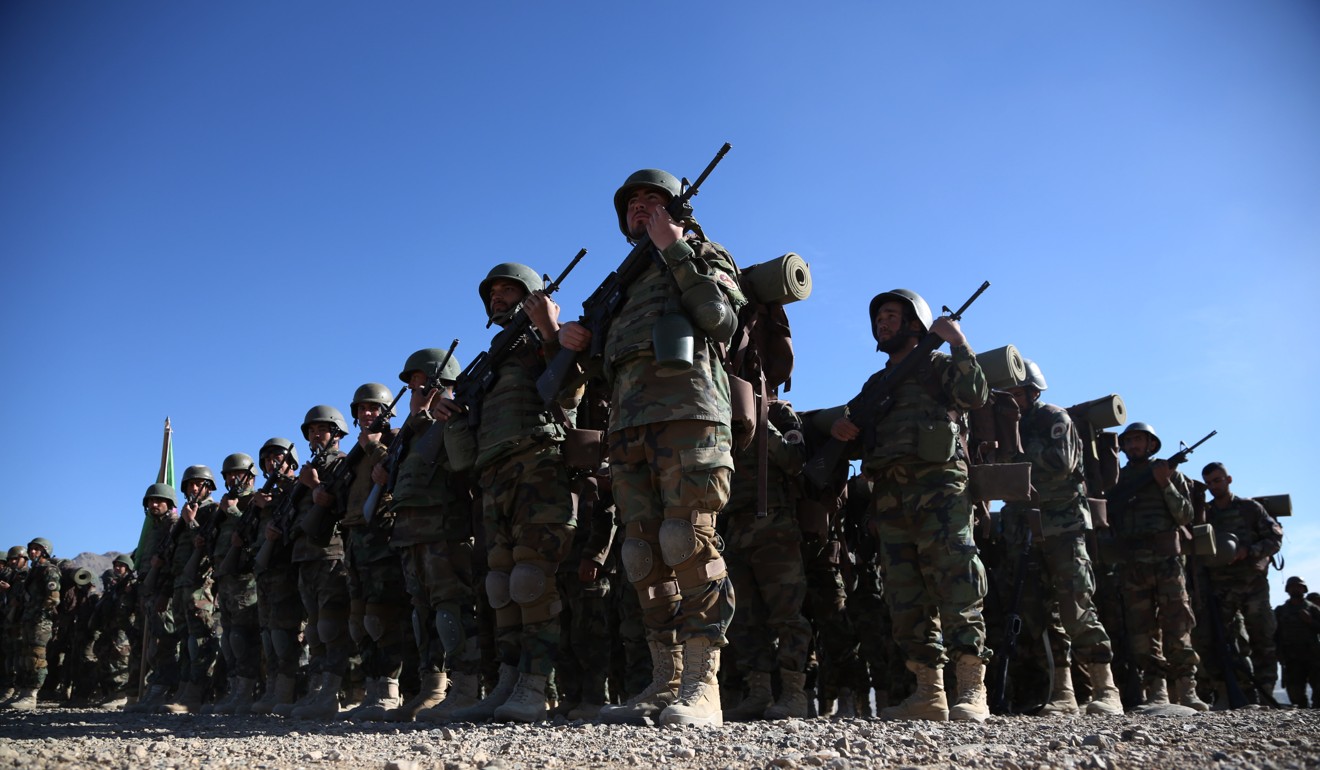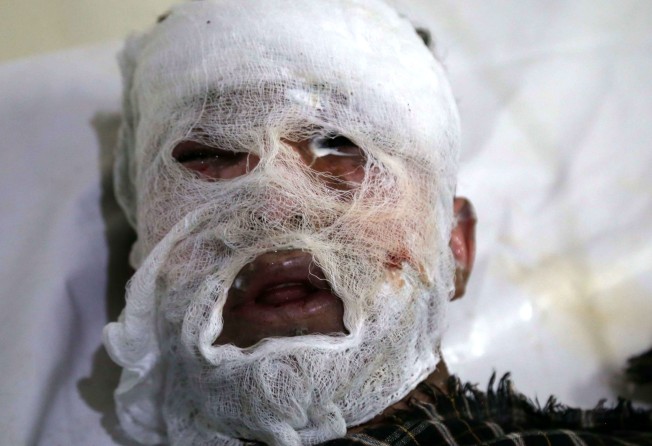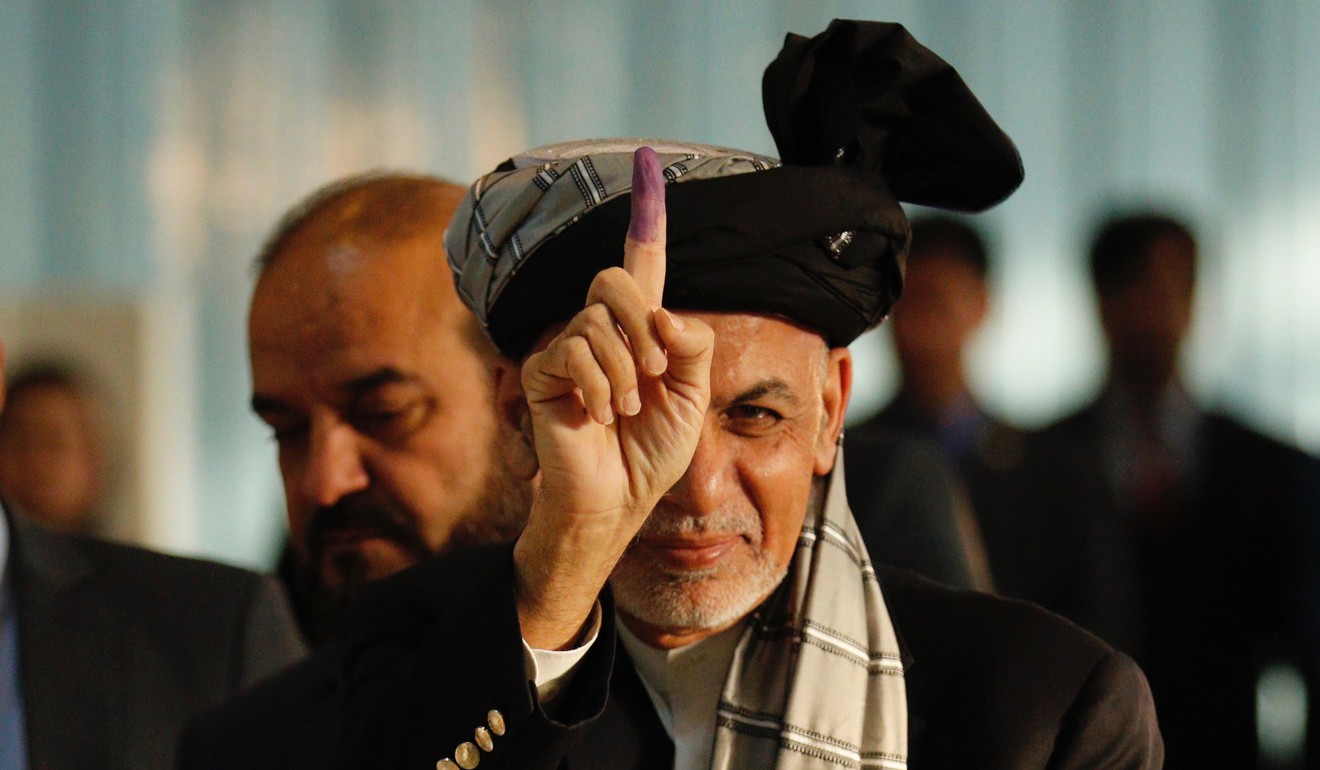
Afghanistan a grim place as America’s longest war drags on
- New report by a US government watchdog paints a discouraging portrait of Afghanistan
- US Secretary of State Michael Pompeo has insisted that Trump’s strategy to fight the Taliban was working

Afghanistan’s dire situation 17 years after US intervention is getting even worse, with government control of territory continuing to slide, narcotics output rising and a worsening drought displacing more people than the armed conflict, according to a Pentagon watchdog.
President Ashraf Ghani’s government controlled or influenced about 55.5 per cent of Afghan districts as of July, the least since November 2015, the US Special Inspector General for Afghanistan Reconstruction said Wednesday in its latest quarterly report.
And after US$8.9 billion in US counternarcotics appropriations, poppy production surged in 2017 and is now four times higher than in 2002, the year after American forces arrived.
“Afghanistan’s narcotics industry helps finance the insurgency, supports criminal networks, fosters public corruption, and undermines the Afghan state,” said John Sopko, whose office is known as SIGAR.
Looking over the broader situation facing the country, his report added that “the last few months saw several discouraging developments”.
While the report covered the period through September 30, it acknowledged more recent grim setbacks, including an attack on an election-security meeting targeting the top US commander in the country and key police and intelligence officials in Kandahar province.

The US commander, General Scott Miller, escaped unharmed, but the province’s intelligence chief and police chief were both killed.
With Afghan forces increasingly relied on to provide security, and US troops in more of a support role, such insider attacks on Afghan troops rose to 56 this year through August 26, up from 44 in the same period a year earlier.
Even as government control of territory slipped, Sopko’s report found that the strength of the Afghan National Defence and Security Forces decreased by 8,827 personnel in the third quarter from the same period last year.
Afghan forces are about 40,000 personnel below their target strength of 352,000, SIGAR said.
Causes for the attrition include personnel being killed in action, going absent without leave or declining to re-enlist, SIGAR said, citing the US Defence Department.
During a trip to Afghanistan in July, US Secretary of State Michael Pompeo insisted that Trump’s strategy to fight the Taliban was working.
Trump acquiesced in August of last year to a Pentagon request to send thousands of additional troops to the country, while US commanders were given more authority to strike the Taliban as well as Islamic State and al-Qaeda terrorists.

Adding to doubts about Afghanistan’s outlook, a drought has displaced thousands of people this year, according to the United Nations.
It said 2.2 million people were affected by the drought in May.
The water shortage threatens wheat production in a country where agriculture employs about 40 per cent of the population.
The United States Agency for International Development expects a wheat-harvest deficit of 2.5 million metric tonnes for 2018, against a need of 6 million metric tonnes, according to the SIGAR report.
In addition, the fight against corruption appears to be at a stalemate. Afghan officials aren’t coordinating with the US while accusations of corruption against high level officials are overlooked, with a focus on lower-level cases, according to the report.
Amid the challenges destabilising the country, the US is seeking to foster peace talks with the Taliban to end what has become the longest war in American history.
Taliban leaders met in October with a US delegation headed by the new special envoy on Afghanistan reconciliation, Zalmay Khalilzad. The talks took place in Doha, Qatar, where the militant group has a political office.
General Miller, the US commander, said in an interview with NBC News that the conflict “is not going to be won militarily”.
“My assessment is the Taliban also realises they cannot win militarily,” Miller told NBC.
“So if you realise you can’t win militarily at some point, fighting is just – people start asking why.”
The Taliban has said they were ready to talk to the US to end the war, but not with the Afghan government as they deem it illegitimate.
A lasting agreement would let Trump draw down US troops, which first arrived in the country soon after the September 11 terrorist attacks.
Defence Secretary James Mattis, who earlier this year called Afghanistan a “tough fight”, said Tuesday that any US role in the country after a peace deal would be “conditions-based” and in conjunction with the Afghan government.
The US strategy “is working from our perspective,” he said.
“But what’s heartbreakingly difficult to accept is that progress and violence can be going on at the same time.”